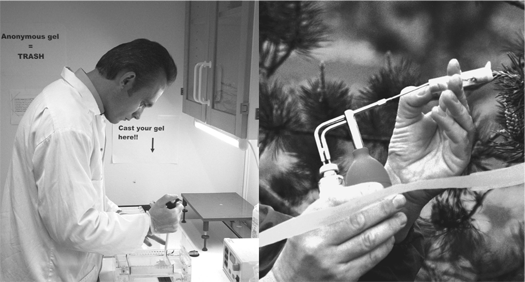
Photo: Skogforsk and Curt Almqvist, Skogforsk
NovelTree combines expertise to generate more productive trees
-I am convinced that, by the end of this project, we will see ecophysiologists, molecular biologists, economists and traditional tree breeders working side by side, with mutual understanding, to achieve more efficient genetic improvement, says Catherine Bastien from INRA-Orléans in France.
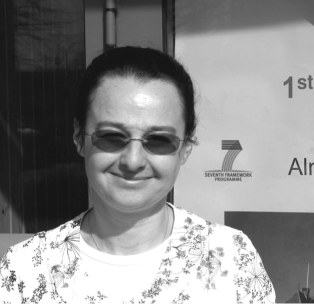
Dr Catherine Bastien is in charge of the management of the consortium
Catherine Bastien is coordinating the EU-financed project NovelTree, which started in May 2008 and will last four years. The €4.1 million project has an overall aim to “enable significant genetic improvement of the composition and characteristics of forest products to satisfy the needs (quality, quantity, sustainability, vulnerability) of consumers and the forest-based sector.”
– Previous cooperative projects have focused on single links in the chain leading to the production of genetically superior trees, such as propagation, breeding, or genetic characterization, says Catherine Bastien. The unique strategy in this project is to develop advanced tools which involve several disciplines. We will be able to describe the genetic composition of tree populations, utilize this information to produce better adapted trees, and implement the results in practical tree breeding and reforestation programmes.
The project is concentrating on a handful of model species: Poplar in southern and central Europe, Maritime pine in the Mediterranean, Scots pine in Fennoscandia and Norway and Sitka spruce in Scandinavia and the United Kingdom. Field trials are being used to characterize the genetic structure and field performance of these species. Advanced new tools for tree breeding and allelic structure analysis will be developed, refined and made available to tree breeders.
One important aim of the project is to increase the competence of European tree breeders and the level of knowledge among foresters. Training material, workshops and handbooks will be produced to fulfil the dissemination and knowledge transfer elements of the project. One example is a decision-support tool for choosing reforestation materials; in the first instance, this will be developed for Scots pine. The Swedish “Planter's guide” is a reference platform for the extended tool.
The first annual project meeting was held in Alnarp, southern Sweden, in March 2009. The NovelTree consortium includes 15 public and private partners from Europe. The Nordic representatives are: Metla and the University of Oulu (Finland), Skogforsk and Uppsala University (Sweden).
NovelTree is organized into a number of working parties, each with a WP leader.
Contact: Catherine. [email protected] (coordinator), www.noveltree.eu (public website)
The WP leaders
WP1: Dr José Climant from INIA, Spain, is in charge of “Choice of selection criteria adapted to sustainable forestry”, which will examine trees’ responses to climate, new land uses and new demands on wood products.
WP2: Professor Martin Lascoux, Uppsala University, Sweden, leads the working party that will, inter alia, generate and map DNA markers to be used in marker-assisted selection.
WP3: Professor Bengt Andersson, Skogforsk, Sweden, leads the working party that will suggest and evaluate new tree breeding strategies, partly based on animal breeding programmes.
WP4: Professor Katri Kärkkäinen, Metla, Finland, leads the working party that will apply the findings from WP3 to deploy the improved trees across the European forest industry.
WP5: Dr Steve Lee, Forest Research, UK, is responsible for disseminating the results to a broad audience: researchers, tree breeders, forestry professionals, policymakers and the public.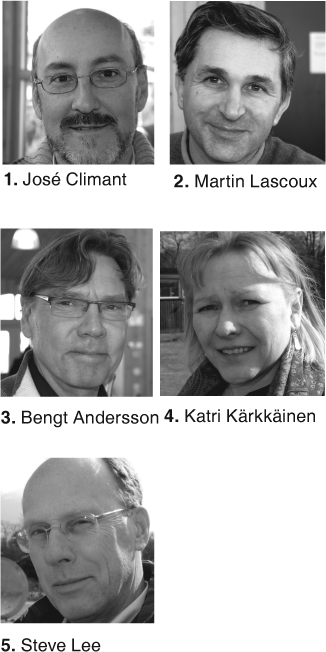
Photos: Mats Hannerz

European cooperation in wood-material research funding takes a step forward
European wood material scientists can look forward to calls for research grants in the autumns of 2009 and 2010. The European network for funding wood material science has recently started a new phase “WoodWisdom-Net 2”, involving 19 partners from 12 countries.
The network will deepen the collaboration between European funding organizations in order to improve coordination of their use of research funds. The final goal is to open a co-funded joint call for research in the field of wood material science.
The joint research programme is an extension and further development of the WoodWisdom-Net Research Programme, which has been active since 2006 and runs to 2011. It had a funding allocation of €20 million and financed 17 research projects.
The main objective of WoodWisdom-Net 2, besides launching the call for grants, is to broaden and strengthen cooperation within the forest-based sector and other relevant sectors, and to extend the trans-national WoodWisdom-Net Research Programme to cover the whole innovation chain from science to industry.
The European involvement in the WoodWisdom-Net project arises from the Finnish Forest Cluster Research Programme Wood Wisdom (1998-2001) and its expansion to the Finnish-Swedish co-funded Wood Material Science Research Programme (2003-2006).
More information can be found on www.woodwisdom.net
Climate change scientists warn: the worst case is the real case
The worst climate change scenarios from the IPCC are likely to be realized. The climate system is already moving beyond the patterns of natural variability. There is a significant risk that many of the existing trends will accelerate, leading to irreversible climatic shifts. These were key messages from the “Climate Change: Global Risks, Challenges and Decisions Conference” held in Copenhagen in March 2009.
The conference attracted 2,500 delegates from 80 countries. The main aim of the conference was to provide a synthesis of the scientific knowledge required to make intelligent social and political decisions concerning mitigation and adaptation strategies to respond to climate change.
The findings of the conference should be seen as supplementary to the work of the Intergovernmental Panel on Climate Change (IPCC). The contributions of the conference provide a summary of existing scientific knowledge two years after the last IPCC report.
The synthesis will be compiled in a book on climate change, the main findings of which will be presented to policy makers before the UN climate change conference in Copenhagen in December 2009.
Read more:
http://climatecongress.ku.dk
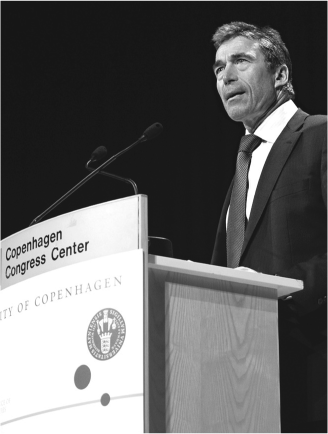
Anders Fogh Rasmussen, The Danish Prime Minister at the time of the conference, closed the congress Climate Change: Global Risks, Challenges and Decisions.
Photo: Lizette Kabré
European foresters aware of climate change
The long life-span of trees allows little room for rapid adaptation to environmental changes. Instead, foresters need to prepare any necessary measures in good time for changed climate in the future.
At the Climate change conference in Copenhagen, Dr Marcus Lindner of EFI (European Forest Institute) presented results from a European survey on strategies for adapting forests and forestry to climate change. The survey included a questionnaire to which 20 member states in the EU responded. The responses were collated into a list of over 1,000 potential adaptation measures, showing that the forest sector in Europe is well aware of the possible implications of climate change.
The most common forestry strategies for adapting to climate change were altering the selection of species, provenances and genotypes of trees, and modifying tending and thinning systems.
The majority of ongoing measures are focused on reducing disturbances, e.g. stormfelling, drought, fire, pests and pathogens. Few of the responses mentioned the potential positive effects of climate change.
The survey also pinpointed the need for more dissemination of information based on research to practitioners and decision makers; this would facilitate the practical implementation of adaptive measures.
Read more:
www.efi.int
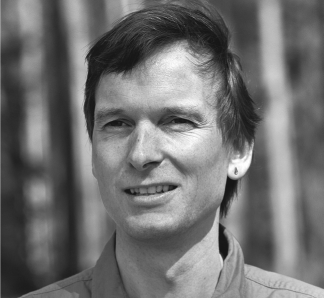
Shortcuts
Sweden: Forestry causes mercury in fish
Up to a quarter of the mercury content in fish found in lakes in the forest landscape can be attributed to forestry activities. Mercury present in the soil leaks out from forest ecosystems during harvesting, and may eventually reach water systems. The mercury leakage at least doubles after harvesting, and the increased leakage may continue for several years, according to researchers at SLU.
Read more: www.slu.se
Finland: Metla Bulletin goes electronic
The first issue of the new electronic newsletter Metla Bulletin was published in 2009. It gives condensed information on current research for an English-speaking audience. The first issue contains articles on Russian forestry, climate change and human health in the context of forests.
Read more:
www.metla.fi
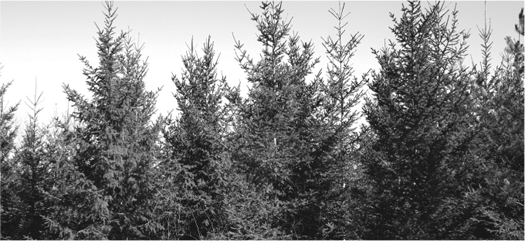
Photo: Mats Hannerz
Increased biomass production discussed at Nordic seminar
A major policy goal in the Nordic countries is to increase wood production. A seminar in Stockholm in March 2009 attracted 50 delegates who discussed the potential to increase tree growth, and the measures required to do so.
The seminar was arranged by Nordgen, the Nordic Genetic Resource Centre. Nordgen was established in 2008 in a merger of three organizations responsible for managing gene resources of plants, domestic animals and forests.
Sweden has implemented several programmes aimed at increasing wood production by 20% or more. The most important measures are the increased use of genetically improved trees, more successful reforestation, new species and fertilization. Since 50% of the forest land is privately owned, specific campaigns are focussed on this group.
In Denmark, the environment, sustainability and social values are usually considered to be more important than wood production per se. However, there is a demand to increase the proportion of energy generated from renewable resources, including biomass. Afforestation of agricultural land may be one option.
In Finland, tree growth exceeds harvesting. Profitability is rather low, especially for small private forest owners. Measures to increase profitability are needed for this group, and these could include economic support and advisory services. Better tending of young forests, ditch cleaning and fertilization are required to maintain high wood production from Finnish forests.Read more: www.norclgen.org
Shortcuts
Iceland: Afforestation continues in Iceland
Siberian larch was the species planted most frequently in afforestation projects in Iceland in 2007, followed closely by Sitka spruce and birch. In total, six million seedlings are used annually for afforestation. On good sites, tree growth can amount to 10-20 m3 per hectare per year. A newly published presentation about forestry in Iceland can be found on the website of the Iceland Forest Service. The author is Throstur Eysteinson.Read more: www.skogur.is
Norway: Dense forest a threat to endangered species
Conservation of forests is not the only measure needed to preserve the red-listed lichen Usnea longissima. When the forest becomes too dense, lichens will decline. Research performed by the Norwegian Forest and Landscape Institute indicates that selective harvesting to maintain a more open forest can be beneficial for this threatened species.
Read more:
www.skogoglandskap.no
